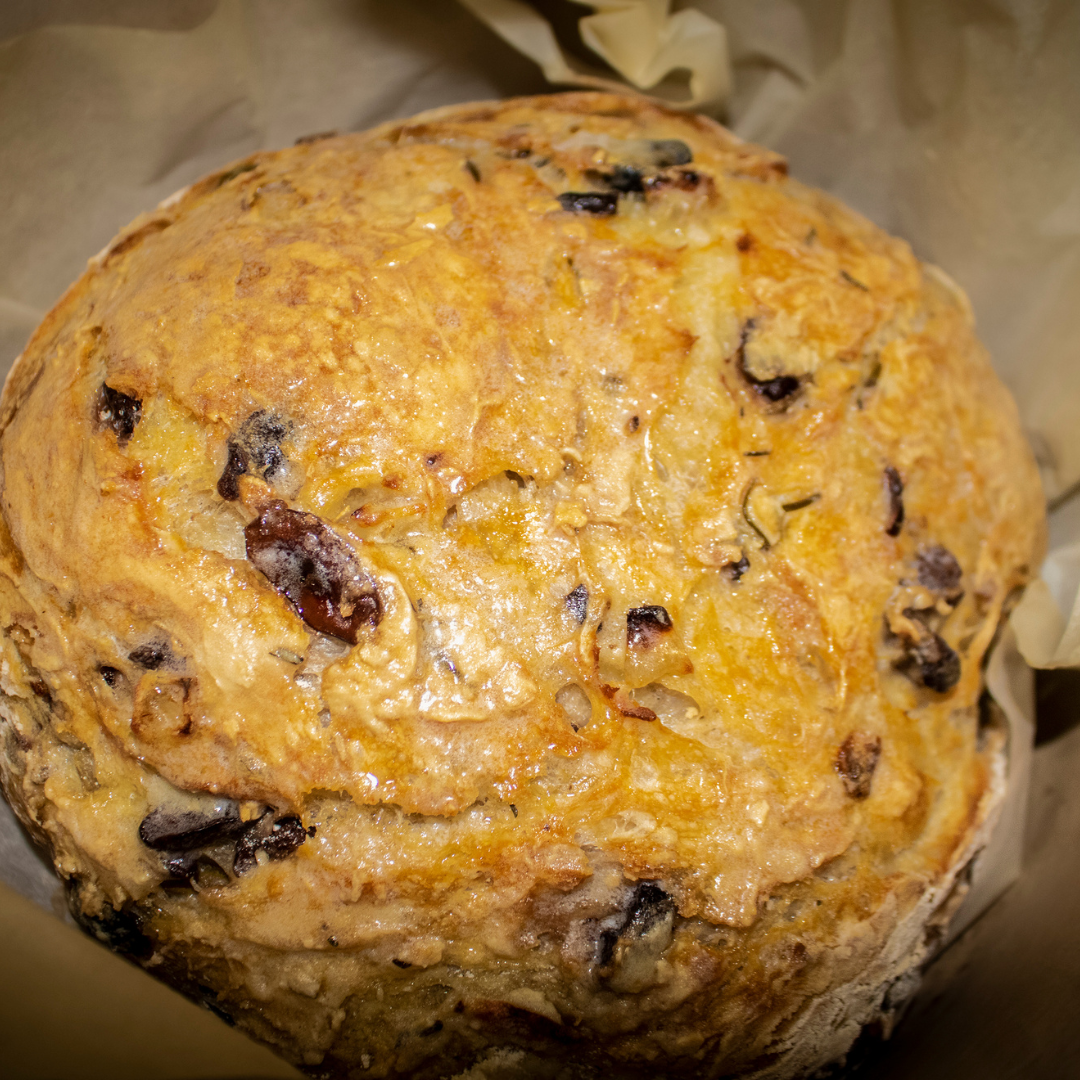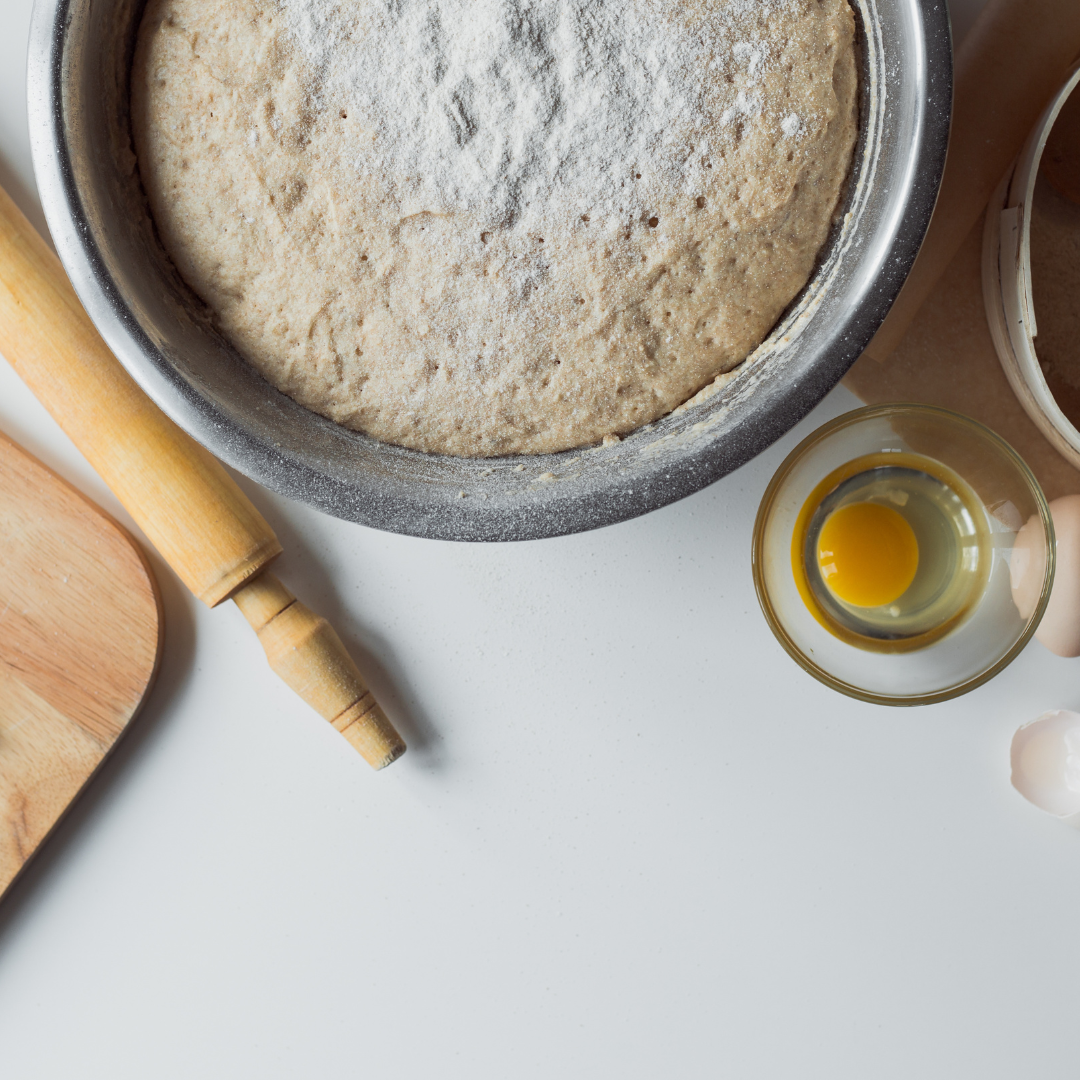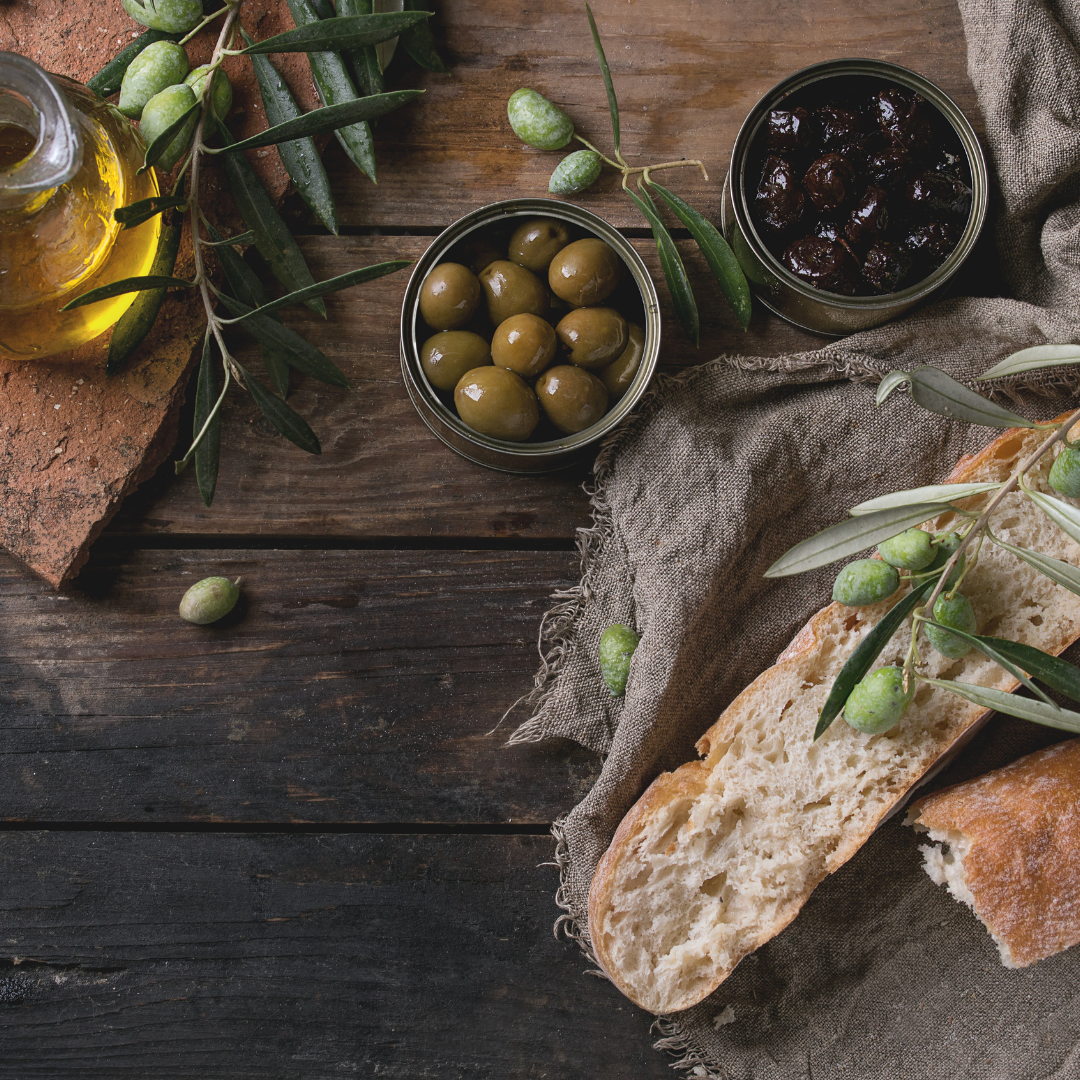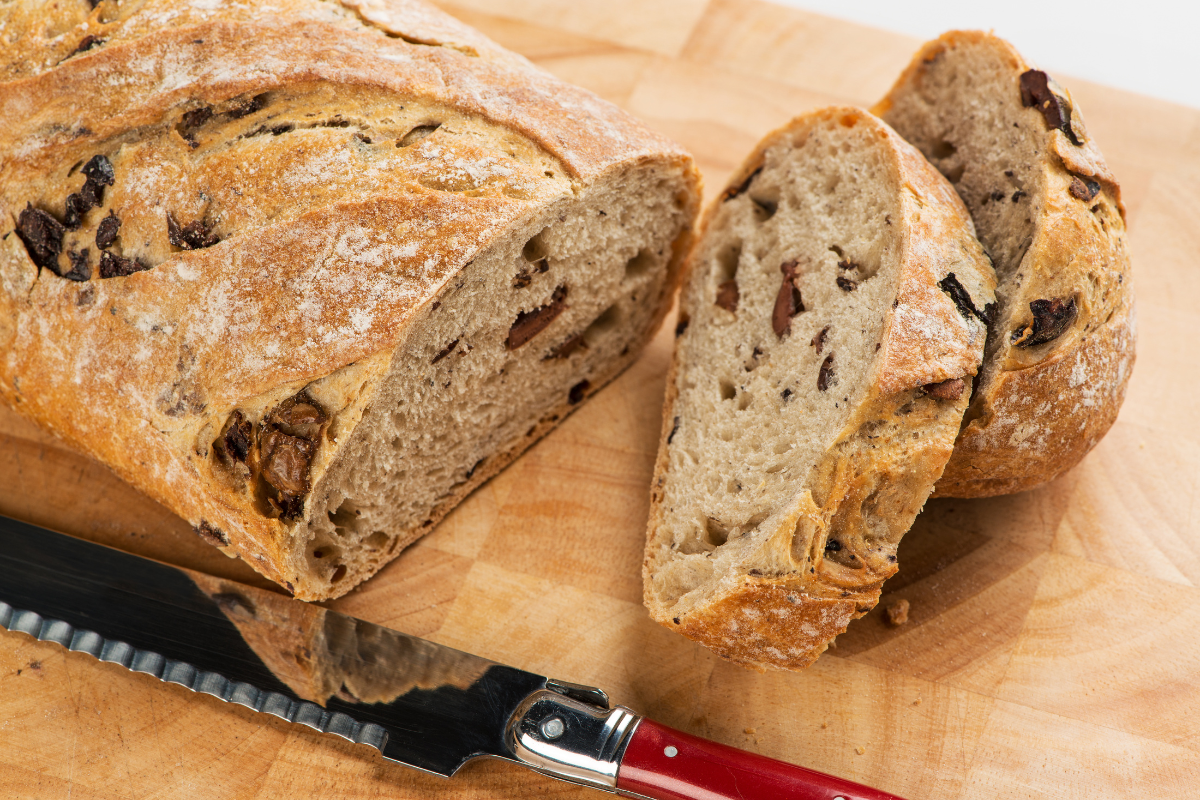Introduction to Olive Bread: The Allure of a Mediterranean Delight
Olive bread, a staple in Mediterranean cuisine, embodies the essence of this region’s rich culinary traditions. Renowned for its savory flavors and rustic charm, this bread combines the tangy taste of olives with the comforting texture of freshly baked dough. Originating from areas where olives are abundant, this bread has been a beloved part of diets for centuries, symbolizing the simplicity and wholesomeness of Mediterranean eating. The incorporation of olives not only adds a distinctive flavor but also infuses the bread with the health benefits associated with these nutritious fruits, including heart-healthy fats and antioxidants. Whether enjoyed as a standalone treat or paired with other regional delicacies, olive bread stands out for its unique taste and cultural significance, offering a delicious glimpse into the Mediterranean way of life.
The Basics of Olive Bread
Understanding the Key Ingredients
The magic of olive bread lies in its simplicity and the quality of its ingredients. At its core, the recipe calls for basic bread-making components: flour, water, yeast, and salt. However, the addition of olives transforms ordinary bread into a flavorful masterpiece. Flour provides the structure, forming the gluten network essential for the bread’s texture. Yeast, the leavening agent responsible for the bread’s rise, creates a light and airy crumb. Water hydrates the dough, activating the yeast and gluten, while salt enhances flavor and regulates yeast activity. The choice of flour—whether all-purpose, whole wheat or a mix—can influence the bread’s density and nutritional profile. Each ingredient plays a pivotal role, working in harmony to create a base that perfectly complements the star ingredient: olives.

The Role of Olives in Bread
Olives are the heart and soul of this bread, imparting a distinct Mediterranean character. Beyond their bold flavor, olives introduce a delightful textural contrast and a burst of color to the loaf. The type of olive used—be it Kalamata, green, black, or a mix—can significantly influence the bread’s taste profile. Kalamata olives offer a robust, fruity flavor, while green olives are milder and slightly tangy. Chopping the olives or incorporating them whole can also affect the bread’s appearance and texture.
Additionally, olives contribute beneficial fats, vitamins, and antioxidants, enhancing the bread’s nutritional value. Their briny juice can even be used to adjust the dough’s hydration, subtly influencing the final product’s moisture and tenderness. In olive bread, olives do more than add flavor; they create a sensory experience that celebrates the vibrant essence of Mediterranean cuisine.
Traditional Olive Bread Recipe
Step-by-Step Traditional Recipe
Creating traditional olive bread is a rewarding baking endeavor that brings a taste of the Mediterranean into your kitchen. Here’s a classic recipe to guide you through the process:
- Ingredients Gathering: Start by assembling your ingredients – 500g of bread flour, 300ml of warm water, 10g of salt, 7g of active dry yeast, 2 tablespoons of olive oil, and 150g of pitted and chopped olives.
- Yeast Activation: Dissolve the yeast in warm water and let it sit for about 10 minutes until frothy, indicating that the yeast is active.
- Dough Formation: In a large mixing bowl, combine the flour and salt. Add the activated yeast mixture and olive oil. Mix until a rough dough forms.
- Kneading: Turn the dough onto a floured surface and knead for about 10 minutes until smooth and elastic. The dough should be slightly tacky but not sticky.
- Incorporating Olives: Gently fold the chopped olives into the dough, ensuring they are evenly distributed.
- First Rise: Place the dough in a lightly oiled bowl, cover it with a damp cloth, and let it rise in a warm place for about 1-2 hours, or until it doubles in size.
- Shaping: Punch down the risen dough to release air bubbles, shape it into a loaf or your desired shape, and place it on a baking sheet lined with parchment paper.
- Second Rise: Cover the shaped dough with a damp cloth and let it rise again for about 30-45 minutes.
- Baking: Preheat your oven to 220°C (428°F). Bake the bread for 25-30 minutes or until the crust is golden brown and the loaf sounds hollow when tapped on the bottom.
- Cooling: Allow the bread to cool on a wire rack before slicing to enjoy the full flavor and texture.
Tips for Perfecting the Texture and Flavor
- Flour Choice: Using high-quality bread flour can significantly improve the bread’s texture, providing the necessary gluten structure for a good rise.
- Hydration: Adjust the water quantity slightly if the dough seems too dry or wet. The olives will release some moisture, so the dough should be a bit firmer initially.
- Olive Quality: Use high-quality, flavorful olives to ensure your bread is packed with Mediterranean zest. Draining and patting the olives dry before adding them to the dough can prevent excess moisture.
- Proofing: Ensure the dough is adequately proofed during both rises. Under-proofed dough won’t have the desired airy texture, while over-proofed dough can collapse.
- Oven Steam: Introducing steam to the oven during the first few minutes of baking can help achieve a crispy crust. Place a pan of water on the bottom rack or spray the oven walls with water.
- Cooling: Allow the bread to cool completely before slicing to let the flavors meld and the texture set, ensuring the perfect olive bread experience.

The Health Benefits of Olive Bread
Olive bread isn’t just a treat for your taste buds; it also offers a range of health benefits, thanks to its star ingredient: olives. Olives are a staple in the Mediterranean diet, renowned for their health-promoting properties. They are rich in monounsaturated fats, particularly oleic acid, which has been linked to reducing inflammation and lowering the risk of heart disease. Additionally, olives contain antioxidants like vitamin E and polyphenols, which help combat oxidative stress and may protect against chronic diseases.
Incorporating whole grains into your olive bread can further enhance its nutritional profile. Whole grains are a good source of dietary fiber, which promotes digestive health and can aid in maintaining a healthy weight. They also provide essential nutrients, including B vitamins, iron, magnesium, and selenium.
Choosing to bake with whole wheat or other whole-grain flour can increase the bread’s fiber content, making it more satiating and beneficial for blood sugar control. Moreover, experimenting with additional healthy ingredients like nuts or seeds can add extra nutrients and textures, transforming your olive bread into a well-rounded, nutritious food choice.
By opting for homemade olive bread over store-bought varieties, you can control the ingredients and avoid unnecessary additives or preservatives, ensuring a healthier and more wholesome product. So, not only does olive bread offer a delightful culinary experience, but it also contributes positively to your overall diet, aligning with a health-conscious lifestyle.
Olive Bread Across Cultures
Olive bread has roots in Mediterranean cuisine but enjoys popularity worldwide, with each culture adding its unique twist. This exploration reveals how different cultures interpret and cherish this beloved bread.
In Italy, bakers make Pane alle Olive, often mixing green and black olives with rosemary or other herbs. This Italian version usually has a crusty exterior and a chewy interior, perfect with various Italian dishes or on its own.
France offers Pain aux Olives, which might include herbes de Provence for a distinctly French touch. This softer version pairs well with French cheeses and wines.
In the Middle East, olive bread often features za’atar, a mix of herbs, sesame seeds, and sumac. This addition gives the bread a unique, aromatic flavor profile, reflecting the region’s culinary traditions.
Each culture’s version of olive bread highlights this dish’s versatility and the olive’s universal appeal. Exploring these variations allows us to embark on a culinary journey, honoring the shared human experience of breaking bread. We discover new flavors and traditions that deepen our appreciation for this timeless food.
Olive Bread as a Culinary Canvas
Olive bread serves as a versatile culinary canvas, inviting bakers to infuse personal flair and creativity into each loaf. Beyond its traditional recipe, this bread acts as a foundation for experimentation, where one can blend various olives, incorporate new grains, or introduce unexpected ingredients like citrus zest or spices. Each baker’s version becomes a unique expression, reflecting individual tastes and culinary influences. Embracing olive bread as a creative outlet not only enhances baking skills but also enriches dining experiences, making each loaf a personalized culinary masterpiece to share and savor.
FAQs
Addressing common questions provides clarity and additional value to readers interested in baking olive bread. Here are some frequently asked questions based on the “People Also Ask” section:
- Can I use canned olives for making olive bread? Yes, you can use canned olives for making olive bread. Ensure they are well-drained and patted dry to remove excess moisture that could affect the dough. However, for the best flavor, consider using high-quality jarred or deli-counter olives.
- How do I store olive bread to keep it fresh? Olive bread should be stored at room temperature, wrapped in a clean cloth, or in a bread box for up to 2-3 days. Avoid plastic bags, which can create moisture and make the crust soggy. For longer storage, slice and freeze the bread in an airtight container or freezer bag.
- Can olive bread be made with whole wheat flour? Yes, olive bread can be made with whole wheat flour, but expect a denser texture. For a lighter loaf, consider using a mix of whole wheat and white bread flour. Adjust the hydration, as whole wheat flour absorbs more water.
- Is olive bread suitable for vegans? Traditional olive bread recipes can be easily adapted for vegans by substituting plant-based ingredients for any dairy or eggs. Use olive oil instead of butter and ensure that the olives and any additional ingredients are vegan-friendly.
- Can I add other ingredients to my olive bread? Absolutely! Feel free to experiment by adding ingredients like sun-dried tomatoes, various cheeses, herbs, or nuts to your olive bread. Just be mindful of the added moisture and flavors to maintain a balanced and delicious loaf.

Serving and Pairing Suggestions
How to Serve and Enjoy Olive Bread
Olive bread is incredibly versatile and can be enjoyed in numerous ways. Serve it warm from the oven to appreciate its crusty exterior and moist, flavorful interior. Slicing it thickly can make for a hearty accompaniment to soups and salads or a robust base for bruschetta. Olive bread also shines when toasted, as the heat intensifies its flavors and adds a delightful crunch. For a simple yet indulgent treat, drizzle slices with extra virgin olive oil or spread them with a layer of creamy goat cheese. Whether you’re enjoying it as part of a meal or as a standalone snack, olive bread’s rich taste and satisfying texture make it a true culinary delight.
Pairing Olive Bread with Meals and Wines
Olive bread pairs beautifully with a variety of dishes and wines, enhancing the dining experience. Its savory profile complements Mediterranean and Italian cuisine, making it an excellent choice alongside pasta dishes, salads, or charcuterie boards. For a harmonious meal pairing, try serving olive bread with a rich tomato-based stew or a fresh, herby salad. When it comes to wine, olive bread’s robust flavors align well with full-bodied reds like Chianti or Syrah, which echo its rustic character. If you prefer white wine, opt for a crisp, acidic variety like Sauvignon Blanc to cut through the bread’s richness. For a more adventurous pairing, try a dry rosé, which offers a balance of fruitiness and acidity, complementing the olives’ briny notes.
Conclusion
Embarking on the journey of baking and enjoying olive bread opens up a world of culinary exploration and delight. This versatile bread not only stands out for its rich, savory flavors but also for its adaptability to various meals and occasions. Whether you’re a seasoned baker or new to the art, the process of creating olive bread offers a rewarding experience, inviting you to experiment with different ingredients and serving styles. We encourage you to embrace the rustic charm and Mediterranean essence of olive bread, making it a cherished addition to your baking repertoire and a beloved feature on your dining table.
